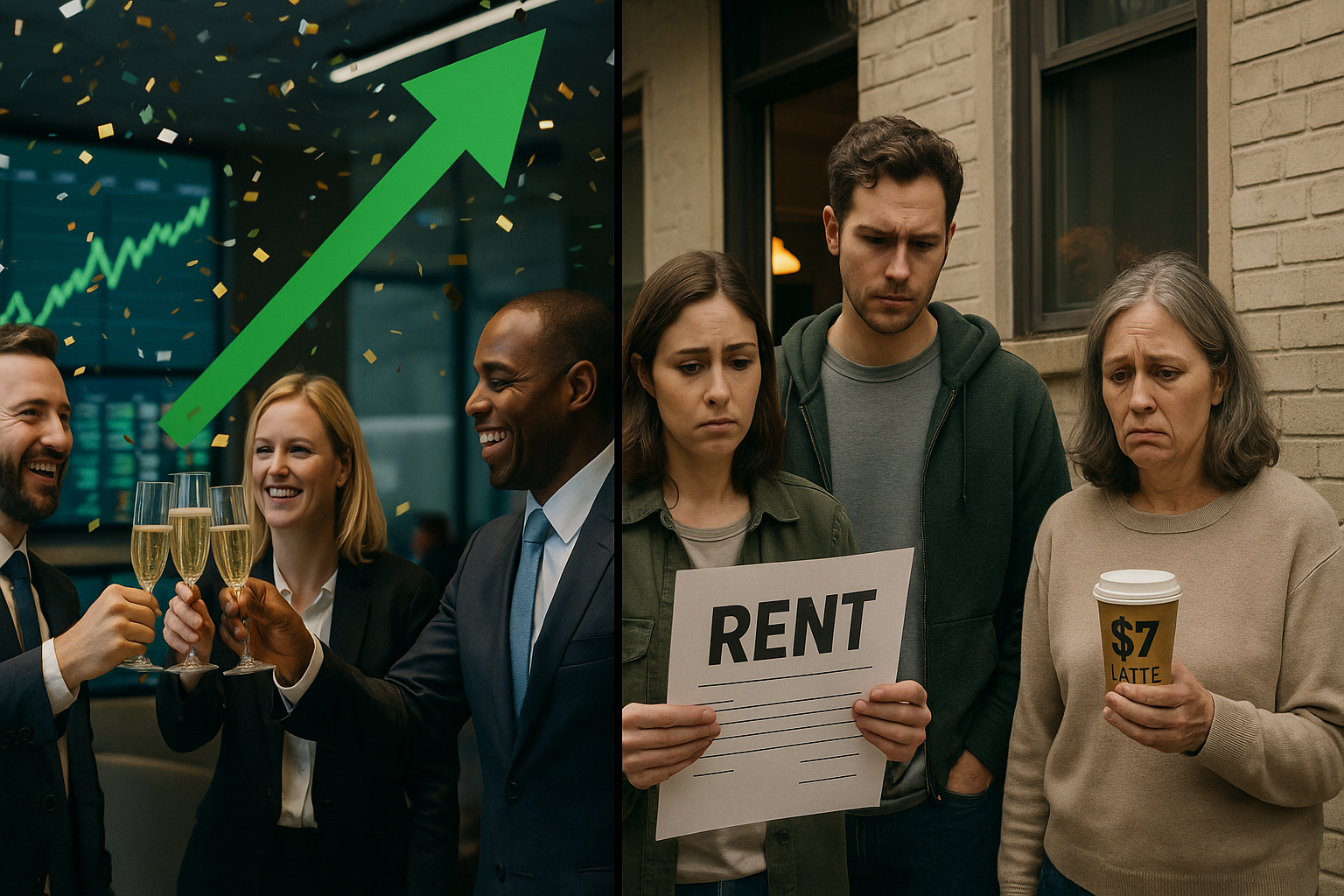The S&P 500 keeps hitting new highs, prompting the age-old investor dilemma: time to ride the wave or head for shore? It's a question that becomes particularly thorny when the economic map doesn't match the territory.
I've been tracking market disconnects since before the 2008 crash, and let me tell you—the gap between Wall Street euphoria and everyday economic reality hasn't been this wide since... well, since just before things went sideways last time.
We're witnessing record market valuations alongside $2,500 studio apartments, $7 lattes, and job listings demanding master's degrees for salaries that barely cover rent. Something doesn't add up.
The Valuation Question
Look, numbers don't lie (though they can certainly mislead). The S&P 500's forward P/E ratio is hovering around 20—way above historical averages. This is when traditional value investors start getting that nervous tic in their eye.
What makes this market particularly weird—and I don't use that term lightly—is the concentration of gains. A handful of mega-cap tech stocks are carrying the market on their algorithmic shoulders while plenty of perfectly solid companies languish in relative obscurity.
"We're not in a market bubble," a fund manager told me over drinks last week. "We're in a series of micro-bubbles that take turns inflating and popping." He ordered another scotch after that comment. I probably should have too.
The Rotation Game
I've watched the smart money playing musical chairs for months now. Tech looking frothy? Shift to industrials. Those heating up? Scurry over to consumer staples. It's exhausting to watch, honestly.
The veterans I respect most aren't making dramatic all-in or all-out moves. They're "trimming the hedges"—scaling back exposure in the frothiest sectors without abandoning ship entirely. It rarely feels good in the moment (who wants to miss more upside?), but it rarely feels bad in retrospect either.
Hindsight's always 20/20, isn't it?
The Indicator Dashboard
So what should you actually be watching? Beyond the obvious P/E ratios that every CNBC talking head mentions, pay attention to:
- The yield curve, which has predicted recessions with unsettling accuracy
- Consumer sentiment indexes—because Main Street knows things Wall Street sometimes forgets
- Insider selling activity (and boy, has there been a lot lately)
- Margin debt levels, which are, frankly, terrifying right now
- The VIX "fear index," currently showing the market complacency that typically precedes... well, trouble
What strikes me isn't any individual indicator—it's their collective message. They're telling a story of investor confidence that seems increasingly detached from economic fundamentals.
The Psychology of Bulls
Bull markets don't die of old age—they die of excess. The challenge? Excess is only obvious in hindsight. During the party, it's rationalized as innovation, paradigm shifts, or my personal favorite, "this time is different."
I remember similar conversations in late 1999. And early 2007. And... you get the pattern.
The bears looked like paranoid doom-preachers until suddenly they looked like prophets. The bulls looked like geniuses until they didn't. The investors who actually preserved wealth weren't those who timed the exact top or bottom (good luck with that), but those who adjusted their risk exposure as evidence accumulated.
Finding Your Risk Tolerance
Here's the thing about market timing that nobody talks about enough—it's not binary. You don't have to be all-in or all-out. That kind of thinking gets investors in trouble.
A 35-year-old with decades until retirement probably shouldn't lose sleep over a potential 20% correction. For someone two years from needing that money for a house down payment? Completely different story.
The question isn't really "Is the market overvalued?"—it almost certainly is. The better question is "How much volatility can I stomach given my particular situation?"
Markets can remain irrational far longer than most pessimists predict (I've lost count of how many "imminent crash" predictions I've heard over the past three years). But they rarely remain irrational forever.
In the meantime, maybe take the opportunity to rebalance. After all, if the disconnect between Wall Street and Main Street persists much longer, you might need both the returns and the safety net.
And maybe—just maybe—keep a little powder dry. The best opportunities often appear when nobody's in the mood to buy.
